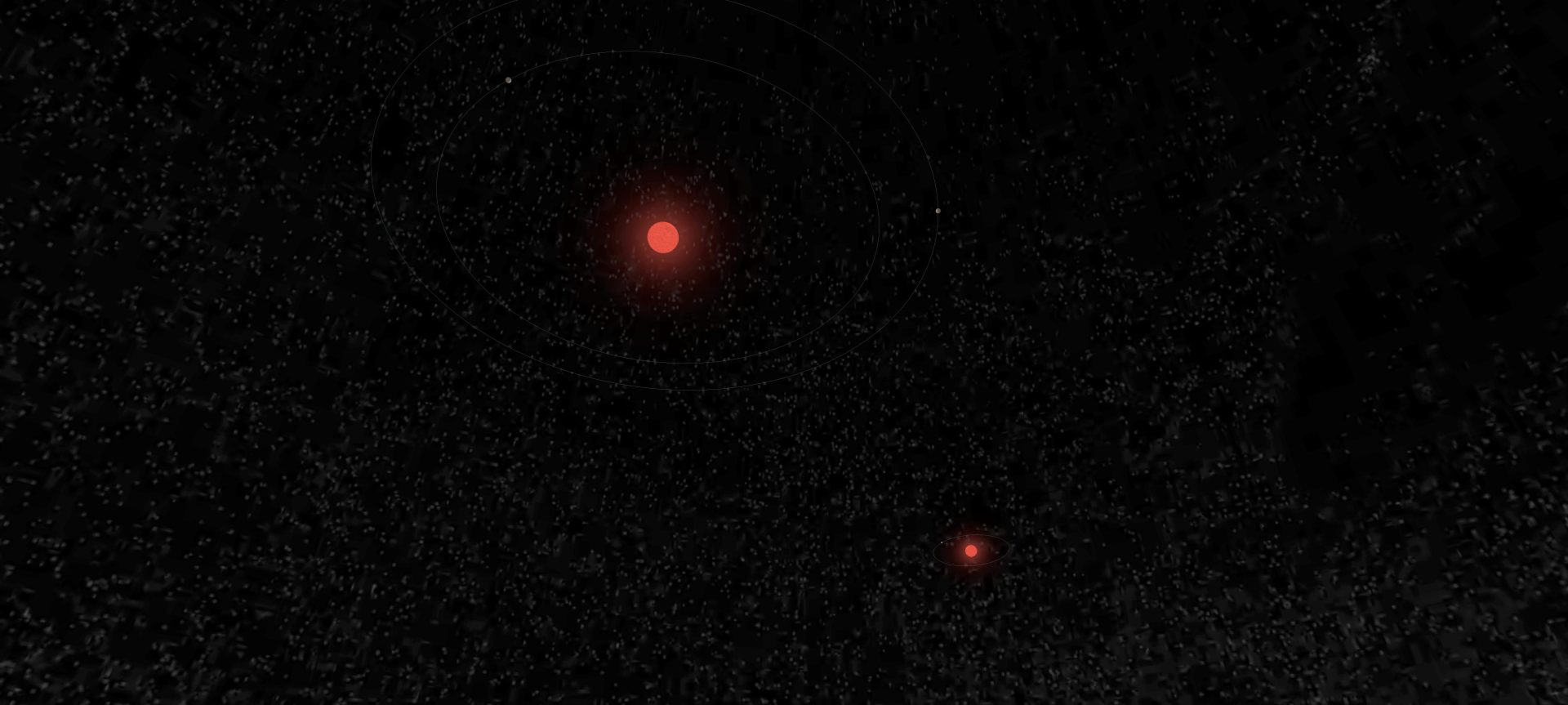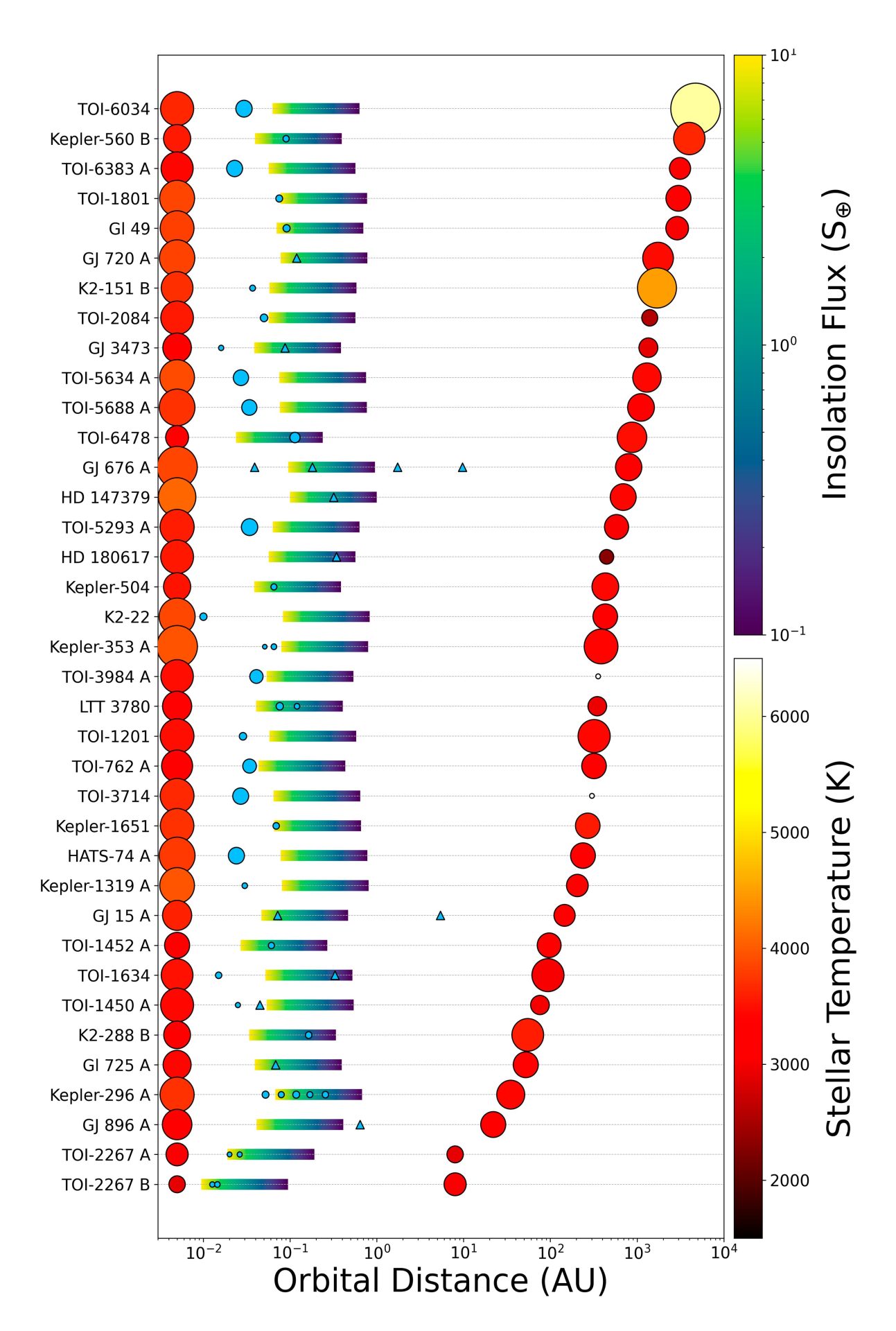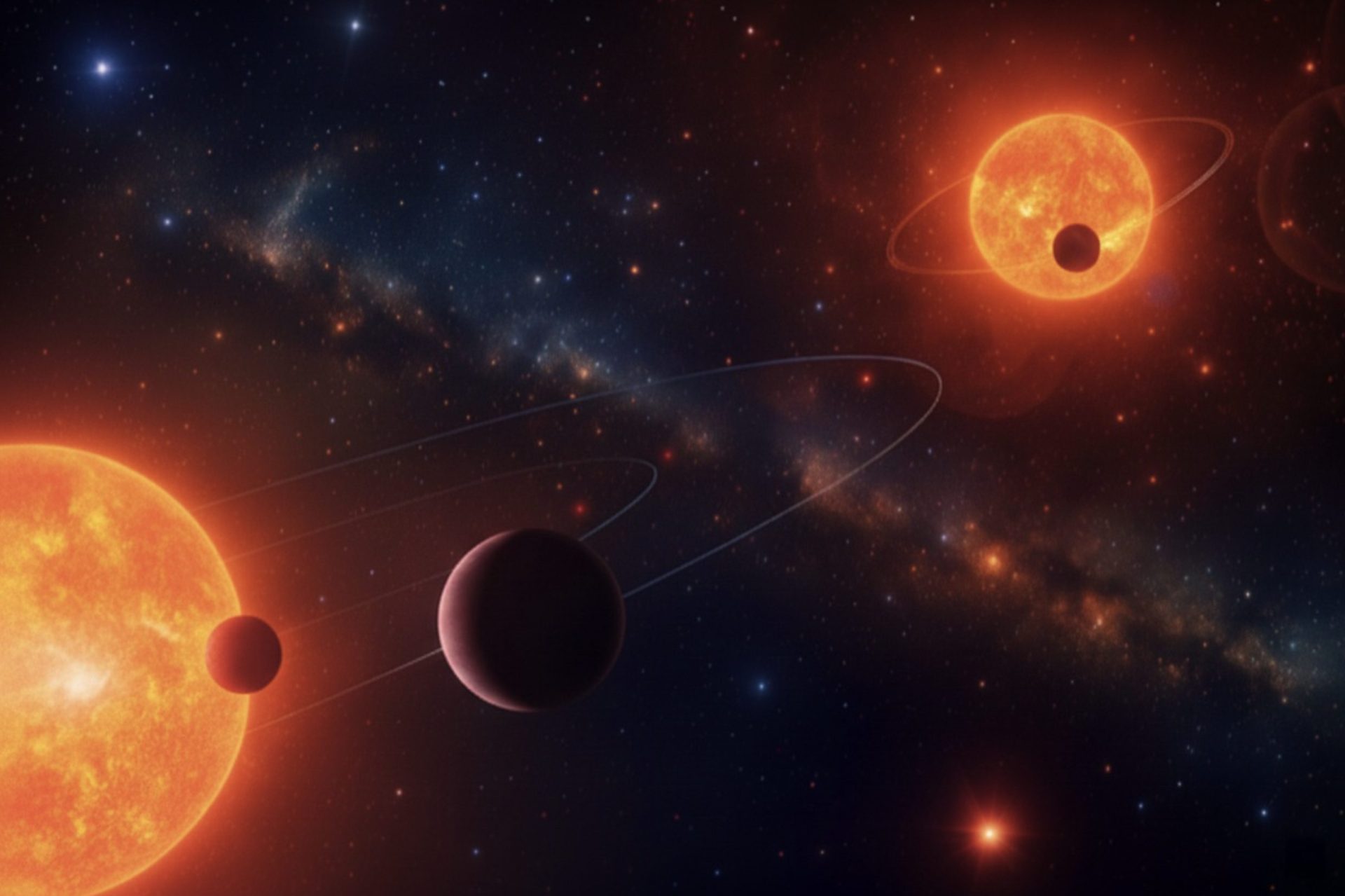The Institute of Astrophysics of Andalusia (IAA-CSIC) has co-led a study that reveals for the first time Earth-sized planets orbiting both stars of an extremely compact binary system
The discovery offers new clues about how planets can form and remain stable in systems with two gravitationally bound stars, which until now were considered unfavorable scenarios for planet formation
Binary systems—formed by two stars orbiting a common center—are very common in our galaxy. However, finding planets in them is a real challenge: the gravitational pull of two suns complicates both their formation and stability. Therefore, each new discovery in this type of environment offers key clues about how and where planets can form.
In this context, the Institute of Astrophysics of Andalusia (IAA-CSIC) has co-led the discovery of a system formed by two very small, cool stars, types M5 and M6, orbiting unusually close to each other. Most surprisingly, strong evidence has been found that Earth-sized planets are transiting in front of both stars, an unprecedented result for this type of system.

Representation of the TOI-2267 binary system. Credit: stellarcatalog
“Until now, in binary systems with known planets, these were always found around a single star or, in very rare cases, around both, but in those systems the stars were very far apart,” explains Francisco J. Pozuelos, a researcher at the IAA-CSIC and co-leader of the study. “A case like TOI-2267 had never been observed before.”
This discovery, published today in Astronomy & Astrophysics , is particularly relevant because it provides new insights into the formation and stability of planets in double-star environments, long considered hostile to the development of complex planetary systems.
A NATURAL LABORATORY FOR THE STUDY OF PLANETS
TOI-2267 is a compact binary system located about 190 light-years from Earth, formed by two stars orbiting each other at a very close distance. From our perspective, they appear separated by about eight times the distance between Earth and the Sun. This measurement is called «projected separation» and represents the minimum apparent distance on the sky, although the actual separation could be somewhat greater.
These types of systems generate a complex gravitational environment, unfavorable for planet formation. However, researchers have identified three Earth-sized bodies in very short orbits, a finding that challenges several classic models of planet formation.
«Our discovery breaks several records, as it is the most compact and coldest pair of stars with planets known, and it is also the first in which planets have been recorded transiting around both components,» explains Francisco J. Pozuelos (IAA-CSIC).

Comparative figure of binary systems, in which TOI-2267 appears to be the most extreme. Credits: Zúñiga-Fernandez & Pozuelos et al. (2025)
The contribution of the Institute of Astrophysics of Andalusia has been decisive in this discovery: thanks to its own exoplanet search software, called SHERLOCK, the team was able to detect two of the three planets in this system even before NASA’s own TESS mission, accessing data that NASA had made public.
This early discovery made it possible to plan follow-up observations from ground-based telescopes more than a year ahead of other international teams, which was crucial for leading the study. Among these observations, those made with the 1.5-meter telescope at the Sierra Nevada Observatory (OSN), scientifically managed by the IAA-CSIC, stand out. The data from these observations were essential for understanding the nature of this unique planetary system in detail.
Definitive confirmation that these were planets required an intensive campaign at several observatories. Among them, the SPECULOOS and TRAPPIST telescopes, led by the University of Liège (Belgium), played an important role.
«This discovery allows us to test the limits of planet formation models in complex environments and better understand the diversity of possible planetary architectures in our Galaxy,» says Sebastián Zúñiga-Fernández, a member of the EXOTIC group at the University of Liège and lead author of the study with Pozuelos.
NEW QUESTIONS AND FUTURE RESEARCH
The discovery raises numerous questions about planet formation in binary systems and opens the way for new observations, particularly with the James Webb Space Telescope (JWST) and the next generation of giant ground-based telescopes. These instruments will allow for more precise measurements of the masses, densities, and perhaps even the atmospheric composition of these distant worlds.
«This discovery forces us to rethink current theories of planet formation in binary systems, which until now have prevented Earth-like worlds from emerging and remaining stable in such complex systems. Most importantly, it opens a completely new window into understanding how planets form and evolve in extreme environments,» concludes Pozuelos (IAA-CSIC).

Artist’s impression of TOI-2267. Credit: Mario Sucerquia (University of Grenoble Alpes)
Downloadable material
Instituto de Astrofísica de Andalucía (IAA-CSIC)
Unidad de Cultura Científica y de la Innovación (UCC+I)
Amanda López Moreno – alm@iaa.es
Emilio García – garcia@iaa.es, 649 407 445 (vía WhatsApp)
Celia Navas – navas@iaa.es
https://www.iaa.csic.es
